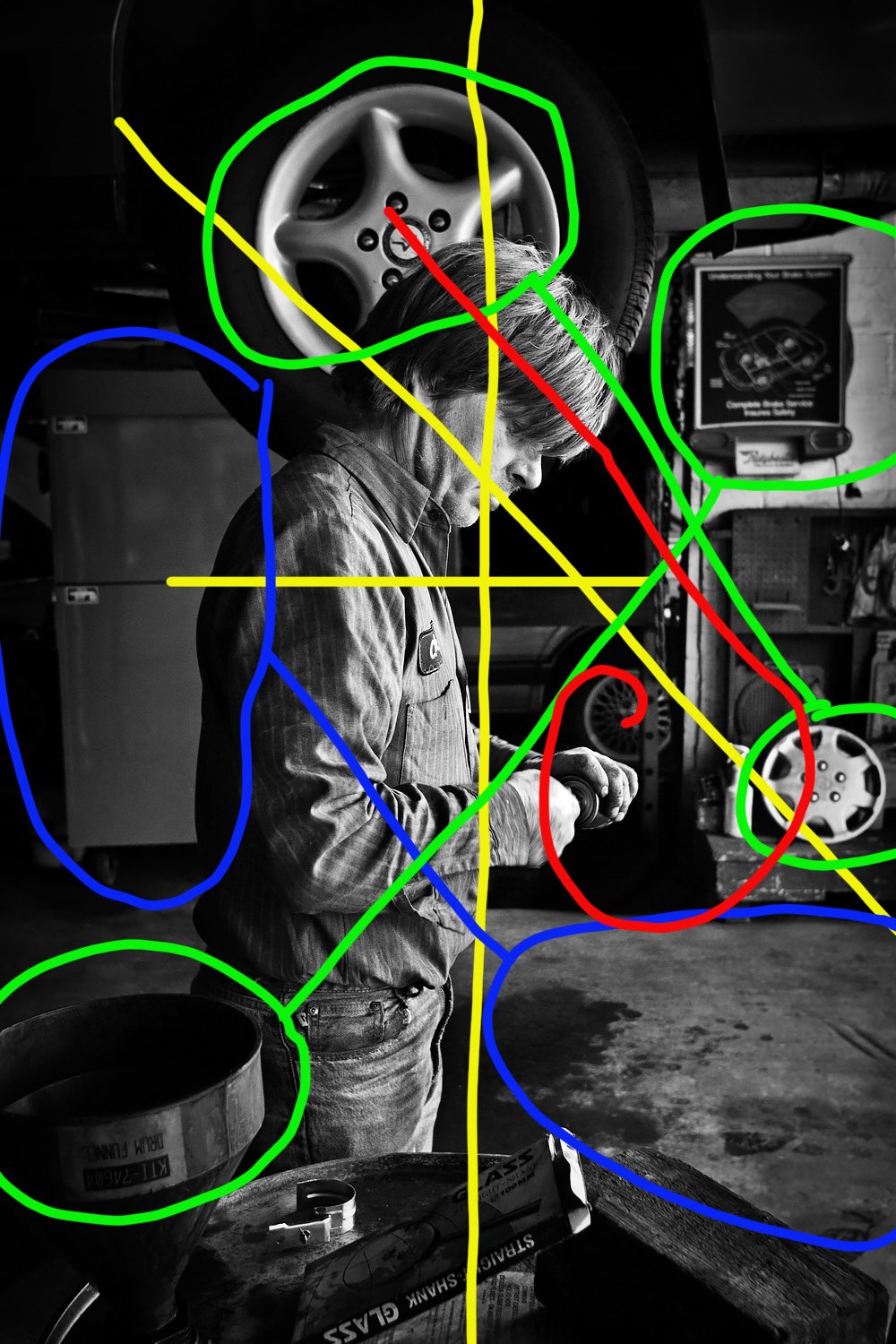Diagraming a Photograph
Taking pictures is easy! Just point and push the button.
Yeah, right.
The diagram below shows what goes through the mind of a photographer a nano-second before the shutter is released. With time, it becomes so second nature you forget you're doing it. You see it all without looking. It becomes a feeling. Or, as my mentor Joseph Costa once told me what his mentor told him, "you look through the viewfinder until that voice in your head kicks you in the ass and says, NOW!"
Breaking it down, line by line.
RED LINE: The first thing I saw was the spiral that starts at the wheel above the mechanics head, travels down at an angle to the wheel on the shelf and rotates around his hands and lands on the tire on the car in the background. I call this a 'modified Fibonacci spiral' (my term, not official).
GREEN LINE: Next comes the balance between different forms within the frame. The two wheels and the can and poster. While the sign itself is a different shape, the balance is still there.
BLUE LINE: Speaking of balance, the negative space occupied by the refrigerator on the left and the concrete floor on the right are areas that balance each other within the photo.
YELLOW LINE: The picture gains power with a strong diagonal line from the tire above center, through the angle of the mechanic's eyes and out the other side through the wheel on the right. The photo has a near perfect division between left and right sides with the subject's head almost dead center. Left and right side of the picture is balanced. Finally, if you draw a line through the space separating the refrigerator door from the freezer above and on through the top of the shelf in the background, it too divides the picture just right. The three lines also form a triangle, which further enhances the strength of the frame.
Of course, all the graphics in the world can't make a weak image strong. The concentration on the mechanic's face as he works on the part in hands enhances the photo, as does the angle of the light streaming into the garage from the right. Put all the individual elements, lines, and graphics together, and the picture works.
It's that simple, and that difficult. All done in the mind and heart of the photographer in a fraction of a moment, every day, on every assignment.
